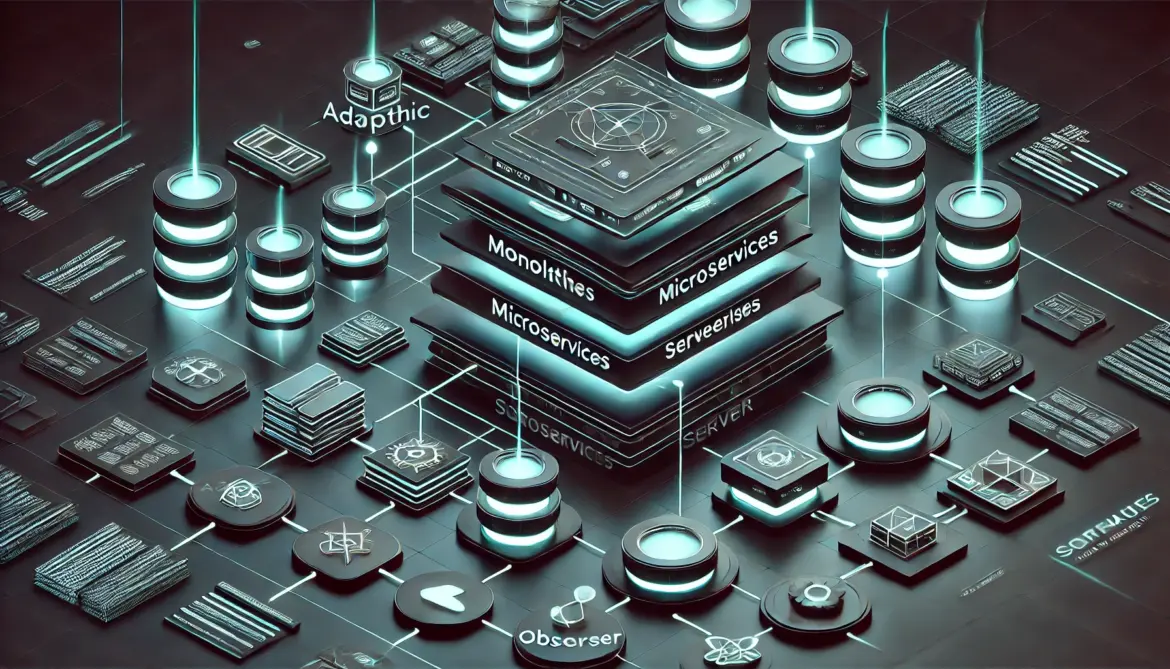Software architecture acts as a blueprint for software much like a building plan. It shows how different system parts connect and interact. Just as building architecture ensures stability and functionality good software design makes sure the system works well, grows , and stays simple to maintain. It considers factors like security, speed, and the ability to handle more users or data.
Key Aspects of Software Architecture
Modularity: This concept compares to breaking a big job into smaller doable tasks. In software, it means dividing the system into smaller, stand-alone parts. Developers can then build, test, and keep up these parts .
Scalability: Scalability ensures a system can grow to meet increasing demands. As more users join or data expands, the architecture allows the system to handle this growth without slowing down or crashing.
Security: A solid architecture also focuses on protecting system data and maintaining user privacy.
Performance: Performance aims to make software run providing quick responses and using resources .
Common Types of Software Architecture
Monolithic Architecture: This traditional approach connects all system parts in one unit. It starts off simple but can become challenging to manage as the system expands.
Microservices Architecture: This splits the system into smaller standalone services. Each service handles a specific job. This setup makes scaling and maintaining the system easier as time goes on.
Serverless Architecture: Here, the cloud provider manages the servers. This lets developers put all their energy into writing code.
What Are Design Patterns?
Design patterns offer proven answers to common problems developers run into when building software. They give tested ways to deal with issues and consistently. Using these patterns helps developers create code that’s simpler to grasp, keep up, and grow.
Types of Design Patterns
Design patterns fall into three main groups:
Creational Patterns: These have an influence on how objects come into being within a system.
- Singleton Pattern: Makes sure a class has just one instance and gives a global access point to it.
- Factory Method Pattern: Lets you create objects without pinpointing the exact class.
- Abstract Factory Pattern: Allows you to make related objects without specifying their concrete classes.
Structural Patterns: These deal with how classes and objects are set up.
- Adapter Pattern: Helps objects with clashing interfaces work together by “adapting” one interface to another.
- Facade Pattern: Makes complex systems easier to use by offering a single interface.
- Decorator Pattern: Adds new features to an object without changing how it’s built.
Behavioral Patterns: These patterns focus on how objects interact and communicate.
- Observer Pattern: This pattern allows an object to notify other objects when its state changes.
- Strategy Pattern: This pattern enables a class to select a behavior or algorithm while it runs.
- Command Pattern: This pattern transforms a request into an object, which can be handled with flexibility.
Why Are Software Architecture and Design Patterns Important?
Maintainability and Scalability: A well-designed architecture ensures the system can grow without becoming a nightmare to maintain.
Reusability: Design patterns provide developers with reusable solutions, which saves time and ensures consistency across projects.
Clear Communication: Design patterns are understood, so they help developers explain complex concepts and design choices to others with ease.
Modularity and Flexibility: A good architecture lets you change or swap out parts of the system without messing up everything else.
Best Practices for Software Architecture and Design Patterns
Know What You Need: Before you pick an architecture or design pattern, figure out what your system needs to do. This helps you make the right choice for your project.
Keep Things Simple: Don’t make stuff more complex than it needs to be. use design patterns when you have to, and try to keep things simple whenever you can. A simple system is easier to fix and change.
Clean Up When You Need To: As your system grows or changes, take another look at your architecture and design choices. Cleaning up your code helps keep the system flexible and modern.
